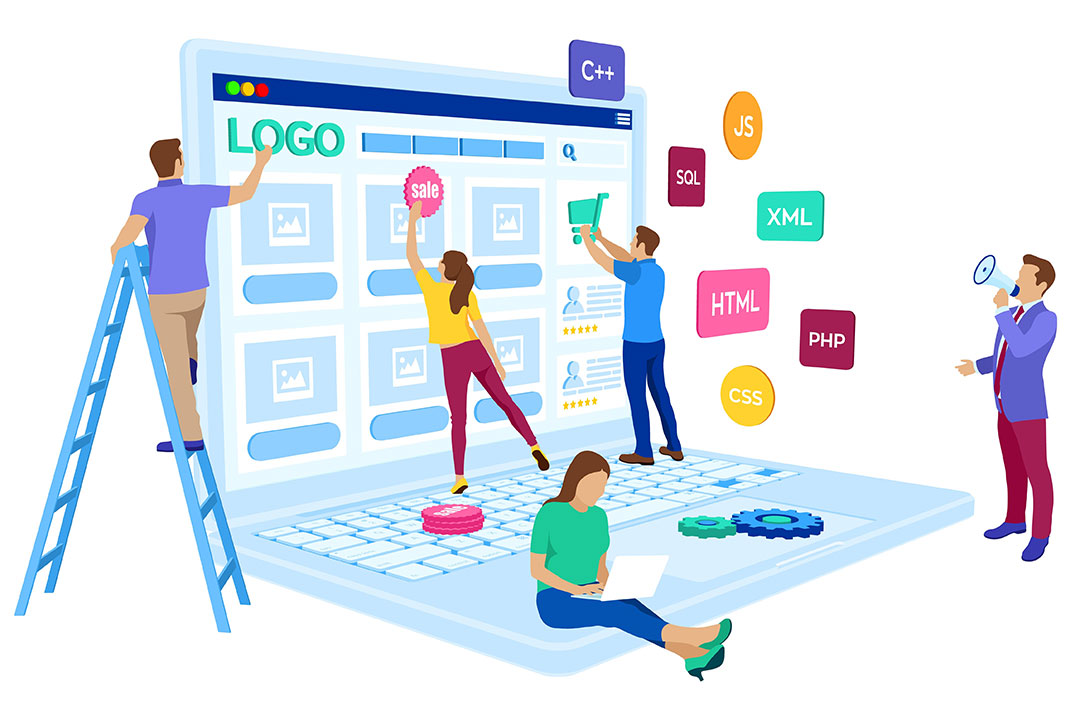A website can include dozens of features and functions, many which you may have never considered or even heard of. But this article won’t get into explaining back-end development such as structure, system, data and meta-tags.
Instead, this is an overview of the key elements that every website worth visiting should include. And you don’t need to be an IT pro to understand them.

Whether you’re building a new website or overhauling an aging one, you may be inclined to immediately start thinking about what your homepage will look like. While that’s not a terrible idea, you should momentarily put that aside.
Good Websites Start With a Plan
Like any business initiative, building a website should start with a plan. The first and most important questions to ask: What is the purpose of my website? Is it to generate leads? Expand my market to new geographic areas? Launch online sales of a product? Whatever your purpose is, all elements of your website should support it.
To further inform your plan, reach out to some of your customers. If you already have a website, ask them what they like and don’t like about it. If this is a new website, find out which features they would find most helpful and appealing.
A goal of your website is to create a positive user experience, so gathering intelligence from the people who will actually use it is a great way to ensure that it will meet their needs.
Another exercise if you’re overhauling an existing website is to examine your analytics. Sessions, pages visited, bounce rates and similar stats paint a picture of your website’s user experience and where there’s room for improvement.
And don’t forget to take a look at your competitors’ websites. Make note of the features that you think work well and those that don’t. Learn from their successes — and their mistakes.
If yours is a new website, you’ll need a domain name. The name you pick can be the name of your company, product or service. It should be easy to remember and easy to spell.
You can purchase and register your name through domain providers, such as GoDaddy, Squarespace or Shopify.
Just be sure the provider you choose is accredited by Internet Corporation for Assigned Names and Numbers (ICANN).
Designing Your Website’s Front Door
With a strategy and domain name in place, it’s time to start designing and building your new website. The homepage is regarded as the front door of a website and creates that important first impression. Since it’s the page your customers will likely see first, it should help visitors get a good sense of what your company is about, make them want to stay and explore the rest of your website – and, ideally, buy your products or services.
Your homepage should prominently feature your company name and logo. They should appear near the top of your homepage as well as consistently throughout the rest of your website.
The footer appears at the bottom of the homepage and interior pages and typically includes a website map, website links and contact information. You can also include a Google map of your physical location, hours, social media icons and similar relevant information.
Because a web experience is highly visual, high-quality images that tell your brand story are extremely important. If possible, avoid stock photos and use original photography of your company, your products and your people.
Video is another great homepage feature to communicate your story and potentially increase the amount of time visitors spend on your homepage.
The About Page: Tell Your Story
The “About” page offers a unique opportunity to paint a portrait of your brand and your company through your history and staff stories. It’s the ideal place to create an emotional connection between your prospective customers and your brand.
Other features commonly included on this page are your company’s values and mission statement. Consider using a video to tell your brand story, perhaps through a message from your CEO.
Every piece of content on your website should have an intended purpose, whether it’s to educate visitors, sell a product or service or connect visitors to your company in some other way.
In addition, each content area should include a CTA (call to action) that invites visitors to “learn more,” “schedule a demo” or another action.
Depending upon the size of your website, there is a wide array of pages you can include to help visitors get to know your company.
Must-have pages include a contact form and, if yours is an e-commerce website, product pages.
Also consider including a portfolio, FAQs, careers page, blogs, company news and customer testimonials. If you produce a newsletter or catalog, include a digital version and offer the opportunity to sign up to receive a print copy.
A chatbot is a popular addition to today’s websites, provided you have content the bot can use to answer inquiries (otherwise the opportunity for customer engagement will be lost to user frustration).
Keep It Fresh
Regardless of the size of your website, it’s critical that you monitor performance continuously to ensure that pages load quickly, the information is current and there are not broken links.
Remember, the ideal page load time is 1-2 seconds, and more than half of your visitors will be viewing your website on mobile. Make sure you deliver not only quality content, but a positive website experience.
Building a website may be the most important thing you can do for your business.
It’s an undertaking that can be time-consuming and costly. But with a clear web strategy, quality content and a high-performing website, you’ll not only drive visitors to your website, but keep them coming back.
And, if you need assistance refreshing or building your website, Fresh Creative is here to help.

